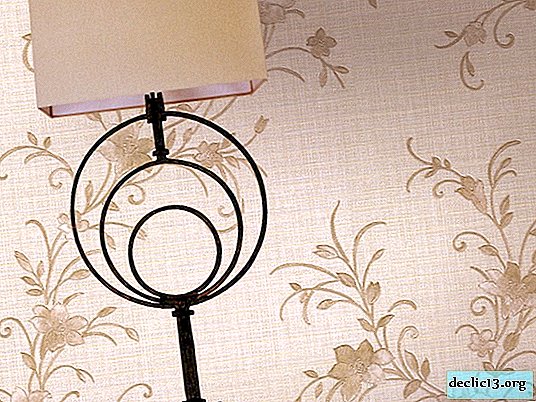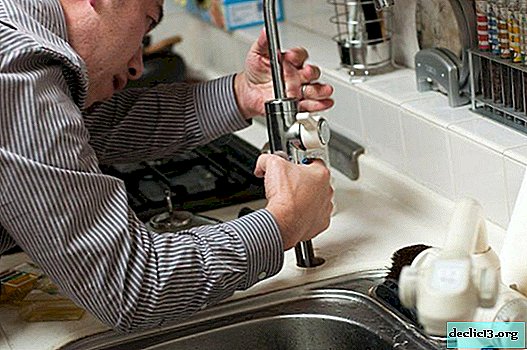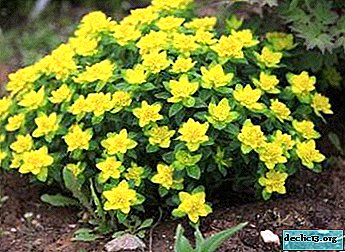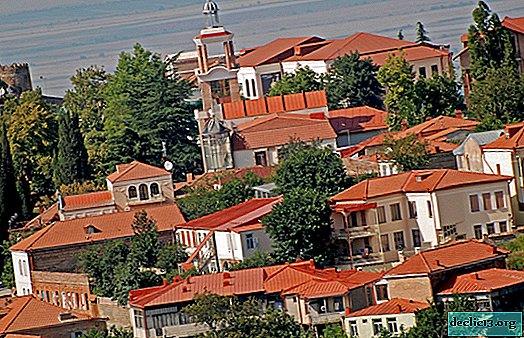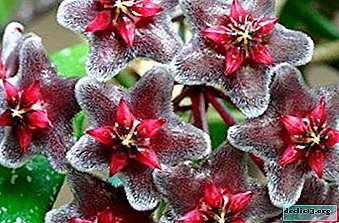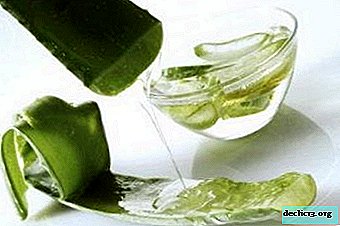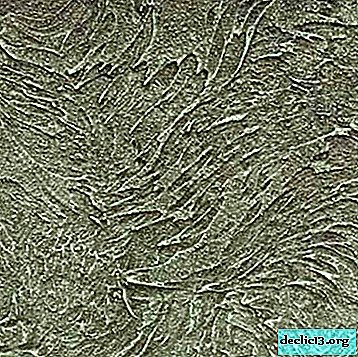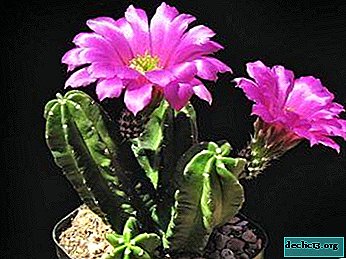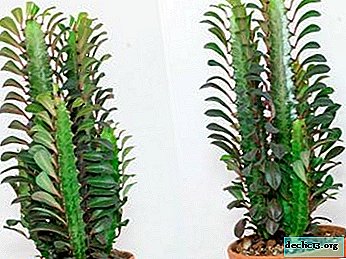Insects as a way to kill aphids and who else eats the parasite? Effective Fighting Rules
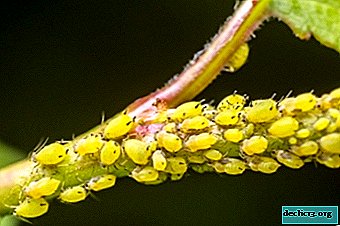
For aphid plants, this is a pest insect that feeds on their juice, thereby preventing it from growing and developing. Infection of aphids greatly reduces crop yields, upsetting gardeners and gardeners. This leads to the search for effective insect control methods.
In addition to chemicals, there are many other, natural ways to kill aphids. First of all, this is the use of insects eating aphids, its larvae and eggs.
Who eats the pest and is the most dangerous devourer?
Obligatory group of insects
The insects belonging to this group are an effective biological weapon against aphids, since it is the main source of nutrition for this group of predators.
Ladybugs
The main assistants of all gardeners are ladybugs and their larvae. Belong to the order of beetles or beetles, they are natural enemies of aphids and are able to eat its colonies from spring to late autumn. The daily diet of one individual consists of approximately 50 aphids.
Particularly quickly and in large quantities, aphids are eaten by the larvae of ladybugs, which are larger than adult beetles and do not resemble them at all (flatter, gray-black in color with red-yellow spots on the sides). Able to swallow from 70 to 100 adult aphid flies and their larvae per day.In nature, ladybugs live along with the aphid colony on which they feed. To get rid of the pest in greenhouses, special technologies are used using larvae and adults of a ladybug, and various methods of attracting beetles are effective in protecting indoor plants.

Lacewing
Insects with transparent wings, light green in color, having large, golden eyes with a tint. The laceworm larvae reach one and a half centimeters long, have a warty body with sparse hairs.
Females lay eggs next to aphid colonies, and sometimes directly in them. Adults prefer to eat plants. But the laceworm larvae are predators, eating aphids, its larvae. They kill other pests of fruit crops. The time of activity of these predators is night.
The lacewing provides invaluable assistance in the battle against aphids, it is recommended that specialists fly this fly in sections or in greenhouses, if it was not previously seen.When attracting an insect, it is advised to use tansy and caraway seeds.

Sand wasp
Adult individuals of sandy or "digging" wasps feed on flower nectar, plant sap, and sweet aphid secretions. Taking care of the offspring, these insects build nests and store food for their larvae, which include aphids, its eggs, larvae, as well as spiders, flies, caterpillars, butterflies and others. Each type of wasp prefers to eat a certain type of pest, the aphid is hunted by a subfamily of wasps Pemphredoninae.
Fighting aphids with wasps is not widely used because of the danger of bites and their consequences for humans, but if you need to attract them to your site, then for the aspen family you will need to arrange a comfortable place to live - a nest.

Optional
For such insects, aphids are not the basis of their diet, its destruction occurs as far as possible. This group includes:
- earwigs;
- crickets;
- ground beetles;
- some types of spiders.
Earwigs
An adult earwig can destroy up to one hundred aphids in one night. This is a very voracious insect with a long flat body, wings and two tails (cerci), which are needed to capture prey. The earwig runs very fast and rarely flies; in food it prefers aphids and ticks.
It can feed on other pests, as well as plants, because of which they prefer to get rid of earwigs in personal plots. And in order to attract the earwig to the affected plant, you should put a pot of wood shavings nearby, where the insect will hide during the day.

Crickets
Of all the varieties, field cricket is most common. This is an omnivorous insect that feeds on both plant foods and small insects and invertebrates, including aphids, and its larvae. In food, he prefers plants, as a result of which he is considered a pest and an unwanted guest in the garden.

Ground beetles
Predators leading nightlife belong to the order of beetles. The length of the body of the ground beetle reaches 60 mm, and the color varies from dark to metallic. It has a diverse diet, can eat aphids, slugs, snails, worms. The more pests in the garden, the more attractive for ground beetles.

Spiders
Spiders are real plant protectors, they kill not only aphids, but also other dangerous insects:
- leaflets;
- Tailtail
- small slugs;
- snails;
- bed bugs.
Mostly they eat winged aphids, which are entangled in a web, but do not disdain and fell to the ground.

How else to destroy the parasite?
In addition to insects, various birds eat aphids:
- Sparrows
- sticks;
- titmouse;
- robins;
- Kings
- linnet;
- zaryanka and others.
They feed their chicks with the fly itself, as well as its larvae. To lure birds create favorable conditions:
- feeders;
- drinkers;
- houses and other natural shelters.
But, attracting insectivorous birds, it is necessary to completely abandon the use of pesticides on the site.
The so-called repeller plants are also enemies of aphids. they emit strong volatile, whose smell is not liked by most pests. Aphids do not tolerate plants with a sharp aroma and therefore migrate. Repellers are usually planted between beds, around the perimeter of fences or small islands. These include:
- garlic;
- onion;
- spices;
- medicinal herbs;
- flowers.
So that the aphids do not bother planting, it is necessary to pay more attention to caring for plants, to observe measures to prevent infection by this pest, and be sure to attract useful helpers to the plot, such as insects and birds, creating comfortable living conditions for them. These measures will effectively help prevent the development of aphids.

